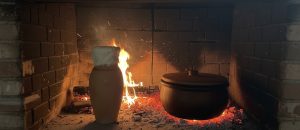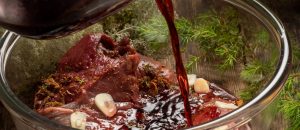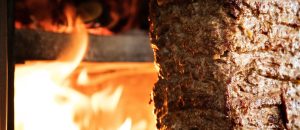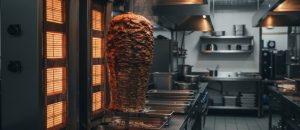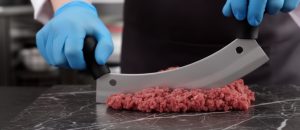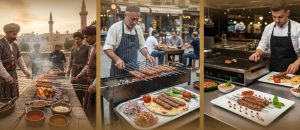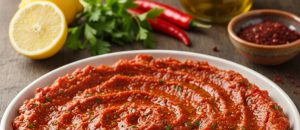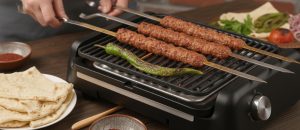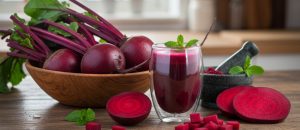Recreating the authentic taste of Adana Kebabı in your own kitchen is entirely possible with the right approach and techniques, even if you don’t have a traditional “zırh” cleaver or professional charcoal grill. This comprehensive, step-by-step guide is designed specifically for the ambitious home chef, breaking down every crucial stage of the process from selecting the perfect lamb meat to mastering the mincing, marinating, skewering, and grilling. We will demystify the secrets behind this iconic Turkish dish, offering practical alternatives to traditional methods while ensuring you capture the rich, spicy, and succulent flavor that defines genuine Adana Kebabı. Prepare to transform your home cooking into a culinary journey to the heart of Adana, and impress your guests with a homemade masterpiece that truly embodies the spirit of Turkish gastronomy.
The Quest for Authentic Adana Kebabı at Home: What You Need to Know
To embark on your journey of making authentic Adana Kebabı at home, it’s essential to first understand the core components and tools that contribute to its distinctive character. This initial knowledge will lay a solid foundation for achieving the succulent texture and spicy flavor that defines this iconic Turkish dish. Getting these foundational elements right is crucial for any home chef aiming for authenticity.
Essential Ingredients: Quality Lamb and the Right Fat Ratio
The key to authentic Adana Kebabı lies in using high-quality lamb meat with the correct fat ratio.
- Lamb Meat: Opt for fresh, young male lamb, specifically from the shoulder or leg (kol or but in Turkish) sections. These cuts offer a good balance of tenderness and flavor. Avoid using meat from older animals, as it can be tougher.
- Lamb Tail Fat (Kuyruk Yağı): This ingredient is non-negotiable for authentic taste and texture. If your chosen lamb cut doesn’t have enough natural fat, you’ll need to add separate lamb tail fat. The ideal ratio is typically 20-30% fat to meat (e.g., for 1 kg of meat, use 200-300g of lamb tail fat). This fat melts during cooking, keeping the kebab juicy and imparting its characteristic richness.
- Red Pul Biber: Use high-quality, vivid red pepper flakes, preferably from Adana or a similar region, known for their specific heat and aroma. The spice should provide a pleasant warmth, not just overwhelming heat.
- Salt: Use good quality sea salt or rock salt to season the meat. It not only enhances flavor but also helps in binding the mince and retaining moisture.
Tools and Setup: Preparing Your Home Kebab Station
Having the right tools and a prepared workspace will make your homemade Adana Kebabı experience smoother and more successful.
- Large Wooden Board: Essential for the mincing process if attempting the traditional zırh alternative.
- Sharp Knives: At least two very sharp, heavy-bladed knives are ideal for hand-mincing.
- Meat Grinder (Optional): If using, ensure it has a coarse grinding plate (8-10mm holes).
- Wide, Flat Metal Skewers: These are crucial for Adana Kebabı. Thin, round skewers will not allow the mince to adhere properly. Aim for skewers that are at least 2 cm (0.8 inches) wide.
- Grill:
- Charcoal Grill: The most authentic option, preferably using oak charcoal for the best flavor.
- Electric Grill/Oven: Viable alternatives if an outdoor charcoal grill isn’t possible. You’ll need an oven rack set close to the heating element or a high-heat electric grill.
- Mixing Bowl: A large bowl for marinating the meat.
- Plastic Wrap: For covering the meat during resting.
- Small Bowl of Water: To wet your hands during skewering.
Mastering the Mince: Zırh Kıyması Alternatives for Home Chefs
Achieving the correct texture of the meat is the most critical step in making authentic Adana Kebabı at home, requiring a technique similar to the traditional “zırh kıyması” without crushing the muscle fibers. The goal is a coarsely minced meat that holds together on the skewer and remains juicy after cooking.
Hand-Mincing with Knives: The Closest Approach
Hand-mincing with sharp knives is the closest you can get to the traditional zırh technique at home, preserving the meat’s fiber structure.
- Chill the Meat: Place your lamb meat and lamb tail fat in the freezer for 20-30 minutes until they are very firm but not completely frozen. This makes them easier to cut cleanly.
- Slice Thinly: On a large, sturdy cutting board, slice the meat into very thin strips, cutting across the grain of the muscle fibers.
- Dice Finely: Stack these strips and cut them again into small, even dice, aiming for pieces roughly the size of rice grains or small peas.
- Chop Rhythmetically: Gather the diced meat and fat into a pile. Using two large, very sharp knives (or one knife with a rhythmic, chopping motion), begin to finely mince the meat.
- Technique: Chop with a strong downward motion, pulling the knives slightly towards you with each chop. Rotate the meat pile frequently to ensure even mincing.
- Goal: The aim is to cut the meat into very fine, distinct particles, not to mash or crush it. This preserves the individual muscle fibers, which is crucial for the kebab’s texture and juiciness.
- Check Texture: Continue chopping until the mixture is uniform, sticky, and holds together when pressed, but still has a visible, granular texture. This process can take 15-25 minutes depending on your knife skills.
Using a Meat Grinder: Tips for the Right Texture
If a meat grinder is your only option, you can still achieve a reasonable texture for A
dana Kebabı by following specific guidelines to minimize fiber damage.
- Chill All Components: Place your lamb meat and lamb tail fat (cut into grinder-friendly pieces) in the freezer for 30-60 minutes until nearly frozen. Also, put the meat grinder head, blade, and coarse die (8-10mm holes) in the freezer to chill thoroughly. This prevents the fat from smearing and helps maintain meat structure.
- Single Pass, Coarse Die: This is paramount. Use only the coarsest grinding plate available for your machine.
- Grind Once: Pass the chilled meat and fat through the grinder only once. Do not put it through a second time, as this will result in a paste-like texture that is too dense and will not yield an authentic Adana Kebabı.
- Mix Gently: After grinding, the meat should still have a somewhat distinct, granular appearance. Avoid over-mixing or over-kneading at this stage.
The Perfect Mix: Marination and Flavor Infusion
Achieving the authentic flavor of Adana Kebabı relies on a simple yet precise marination process that allows the natural flavors of the meat and a minimal selection of spices to shine. Unlike some kebabs that use elaborate marinades, Adana Kebabı emphasizes the quality of its core ingredients. This section details how to properly mix and prepare your minced meat for optimal taste and texture.
Simple Yet Powerful: Spices for Authentic Taste
The spice blend for authentic Adana Kebabı is remarkably simple, focusing on enhancing rather than masking the lamb’s natural flavor.
- Red Pul Biber: Use high-quality, vivid red pepper flakes as the primary spice. The quantity depends on your preference for heat, but for 1 kg of meat, typically start with 20-40 grams. Adjust based on the heat level of your specific pepper flakes.
- Salt: Use good quality sea salt or rock salt. For 1 kg of meat, approximately 20-30 grams of salt is a good starting point. Salt not only seasons the meat but also aids in binding the mince and drawing out proteins, which helps the kebab adhere to the skewer.
- Optional (Very Small Amount): Some traditionalists may add a tiny pinch of red sweet paprika powder for color, but this is less common and should be used sparingly if at all. Avoid garlic, onion, cumin, black pepper, or any other complex spices, as these are not traditional for Adana Kebabı.
The Art of Kneading and Resting the Mince
Proper kneading ensures the spices are evenly distributed and the meat develops a cohesive texture, while resting allows flavors to meld and structure to set.
- Gentle Kneading: Place your minced meat (with the added lamb tail fat), red pul biber, and salt in a large mixing bowl.
- Technique: Use your hands to gently but thoroughly mix the ingredients. The goal is to distribute the spices evenly and to encourage the meat proteins to bond, making the mixture slightly sticky.
- Duration: Knead for about 5-7 minutes. Avoid over-kneading, as this can make the meat tough and rubbery due by excessively breaking down protein structures.
- Moisture Aid: You can slightly wet your hands with cold water during kneading; this helps prevent the mince from sticking to your hands and can aid in developing the desired consistency.
- Crucial Resting Period: Once mixed, gather the meat into a ball, cover the bowl tightly with plastic wrap to prevent air exposure, and refrigerate it for at least 2-3 hours, or preferably overnight.
- Why Rest? This resting period is vital. It allows the flavors from the salt and pepper to fully penetrate the meat, and it gives the meat’s proteins time to develop a stronger bond, which is essential for the mince to stick to the skewers during cooking. Cold meat is also easier to skewer and less prone to falling off.
The Skewering Technique: Crafting Your Kebab
Properly skewering your Adana Kebabı is an art that ensures even cooking, prevents the meat from falling off, and creates the distinctive, appetizing appearance. This step requires a bit of practice but is essential for an authentic result.
Choosing the Right Skewers and Quantity
Selecting the correct type and size of skewer is fundamental for Adana Kebabı.
- Wide, Flat Metal Skewers: You must use wide, flat metal skewers for Adana Kebabı.
- Dimensions: These skewers should be at least 2-3 cm (0.8-1.2 inches) wide and typically around 50-60 cm (20-24 inches) long.
- Why Flat? The flat surface provides excellent contact with the meat, allowing it to adhere securely and cook evenly without rotating on its own. Thin, round skewers will cause the meat to spin and fall off into the fire.
- Portion Size: For each skewer, use approximately 120-150 grams (about 4-5 oz) of the prepared meat mince. This portion size allows for proper cooking and shaping on the wide skewer.
- Quantity: Plan on 1-2 skewers per person, depending on appetite and other dishes served.
Shaping the Kebab: Achieving the Signature Look
The specific method of shaping the mince onto the skewer creates Adana Kebabı’s characteristic look and helps in its uniform cooking.
- Wet Your Hands: Keep a small bowl of cold water nearby. Wet your hands thoroughly before handling each portion of mince. This prevents the sticky meat from adhering to your hands and makes shaping easier.
- Take a Portion: Take one portion of the rested mince (120-150g) and gently form it into an elongated ball in your hand.
- Center on Skewer: Place the meat ball in the center of the wide, flat skewer.
- Spread Evenly: Using the palm and fingers of both hands, gently press and spread the mince along the skewer.
- Pressure: Apply firm but gentle pressure, working the meat from the center outwards, ensuring it covers about 30-35 cm (12-14 inches) of the skewer’s length, leaving about 10-15 cm (4-6 inches) bare at each end for handling.
- Thickness: Aim for an even thickness of about 1-1.5 cm (0.4-0.6 inches) all around the skewer.
- Create “Kıymık” (Indents): This is a signature feature. With your wet fingers, gently press into the meat along the skewer at intervals of about 2-3 cm (1 inch).
- Purpose: These indentations (kıymık) help the kebab cook more evenly, allow the fat to render and drip, and create the classic ribbed appearance.
- Secure the Ends: Ensure the meat is firmly attached to the skewer, especially at the ends. Gently press and seal the mince around the skewer to prevent it from falling off during grilling.
- Chill Again (Optional but Recommended): If you’ve prepared several skewers, place them on a tray and refrigerate them for another 15-30 minutes before grilling. This helps the meat set on the skewer even more securely.
Grilling to Perfection: Cooking Adana Kebabı
The cooking stage is where the magic of Adana Kebabı truly comes to life, as the heat transforms the simple minced meat into a juicy, flavorful, and aromatic delicacy. While charcoal grilling is the traditional and preferred method, successful adaptations can be made for indoor cooking. Mastering the heat and timing is crucial for achieving that perfect balance of crispy exterior and succulent interior.
Charcoal Grill: The Traditional Method and Its Secrets
Cooking Adana Kebabı over a charcoal grill is the most authentic method, imparting a distinct smoky flavor and superior texture.
- Prepare the Coals: Use oak charcoal if possible, as it burns hotter and imparts a better flavor. Light the charcoal and wait until it is fully red-hot and covered with a layer of gray ash, with no flames visible. This indicates even, consistent heat.
- Arrange Coals: Spread the hot coals evenly in your grill to create a consistent heat zone.
- Optimal Distance: Place the skewers over the hot coals, ensuring there’s a distance of approximately 15-20 cm (6-8 inches) between the skewers and the coals. This prevents scorching and allows for even cooking.
- Constant Turning is Key: This is the most important secret to a perfectly cooked Adana Kebabı.
- Initial Searing: Begin by turning the skewers very frequently (every 30-45 seconds) for the first few minutes. This quickly sears the outside of the meat, locking in the juices and helping the mince adhere firmly to the skewer.
- Even Cooking: Continue turning constantly throughout the cooking process. Avoid leaving a skewer on one side for too long, as this will burn one side and leave the other undercooked, and cause the meat to dry out. The continuous turning ensures all sides cook evenly and the fat renders slowly.
- Manage Flare-Ups: As the lamb tail fat renders and drips onto the coals, it might cause flare-ups.
- Action: If flames appear, briefly move the skewers away from the direct flames until they subside, or use a small amount of water to spray the coals (sparingly, as too much water reduces heat). The goal is to cook with heat from the coals, not direct flames.
- Doneness: Adana Kebabı is typically cooked to a medium to well-done state, but it should still be juicy inside.
- Indicators: The surface will be nicely browned and slightly charred, with visible indentations. The meat will feel firm but not hard to the touch. The total cooking time will vary based on coal heat and skewer thickness, typically 10-15 minutes.
Oven or Electric Grill: Adapting for Indoor Cooking
If an outdoor charcoal grill isn’t an option, you can still achieve a delicious Adana Kebabı using an oven or an electric grill, with a few adaptations.
- Oven Method:
- Preheat: Preheat your oven to its highest setting, ideally around 230-250°C (450-480°F), with the grill (broiler) function on, if available.
- Setup: Line a baking sheet with aluminum foil for easier cleanup. Place a wire rack over the baking sheet.
- Arrange Skewers: Lay the skewered kebabs on the wire rack. If your skewers are too long, you can form smaller, thicker kebabs or use shorter, oven-friendly skewers.
- Cook: Place the baking sheet with kebabs in the upper third of the oven, close to the heating element/broiler.
- Turn Frequently: Cook for 8-12 minutes, turning the kebabs every 2-3 minutes to ensure even browning and to prevent one side from burning. The high heat will mimic the grill’s searing effect. The fat will drip onto the foil below.
- Electric Grill Method:
- Preheat: Preheat your electric grill to its highest setting. Ensure it’s hot before placing the kebabs.
- Lightly Grease: Lightly brush the grill grates with a high-smoke-point oil (like vegetable oil) to prevent sticking.
- Cook and Turn: Place the skewers directly on the hot grill. Cook for 8-12 minutes, turning every 2-3 minutes until the kebabs are nicely browned and cooked through.
Key for Both Alternatives: The goal is to cook quickly at high heat to achieve a good sear and juicy interior. The smoky flavor of charcoal will be absent, but a well-cooked, juicy kebab is still achievable.
Serving Your Homemade Masterpiece: Traditional Accompaniments
Serving Adana Kebabı is an experience in itself, where the main dish is complemented by an array of fresh, vibrant, and traditional side dishes that enhance its rich flavor profile. These accompaniments are not just additions; they are integral to the authentic Adana Kebabı meal.
Essential Side Dishes: Salads and Mezes
The right salads and mezes provide a refreshing contrast to the rich and spicy kebab, cleansing the palate and adding textural diversity.
- Sumac-Onion Salad (Sumaklı Soğan Salatası): This is non-negotiable. Finely slice red onions into thin crescents. Mix them with a generous amount of fresh parsley, a good squeeze of lemon juice, and a liberal dusting of sumac. This salad cuts through the richness of the kebab and is often eaten wrapped inside lavaş with the kebab.
- Gavurdağı Salad or Spicy Ezme:
- Gavurdağı Salad: A finely chopped salad of ripe tomatoes, cucumbers, green peppers, onions, and parsley, dressed with pomegranate molasses (nar ekşisi) and olive oil. Its fresh, tangy profile is a perfect counterpoint.
- Spicy Ezme: A vibrant, finely chopped mix of tomatoes, hot green and red peppers, parsley, garlic (optional for Adana), and pomegranate molasses. It offers an additional layer of heat and acidity.
- Fresh Greens: A simple platter of fresh rocket (arugula), parsley, and mint leaves, often served with lemon wedges. These greens provide a crisp, clean bite between mouthfuls of kebab.
The Right Drink: Şalgam Suyu and Ayran
Traditional Turkish beverages not only quench thirst but also perfectly complement the flavors of Adana Kebabı.
- Şalgam Suyu: This fermented turnip juice is Adana’s iconic drink. It has a distinctive sour and slightly spicy taste.
- Why it Works: Its refreshing acidity and often spicy kick cut through the richness of the kebab and cleanse the palate, preparing it for the next delicious bite. Available in “acı” (spicy) and “acısız” (non-spicy) versions, with the spicy version being very popular in Adana.
- Ayran: A traditional Turkish drink made from yogurt, water, and a pinch of salt, often served cold and frothy.
- Why it Works: Its creamy, tangy, and cooling properties provide a soothing contrast to the kebab’s heat and richness, making it a very popular choice.
- No Sugary Drinks: Avoid sugary sodas or fruit juices, as they can overwhelm the delicate balance of flavors and are not traditional accompaniments.
Troubleshooting and Expert Tips for Home Kebab Success
Even with a detailed guide, home chefs might encounter challenges when attempting Adana Kebabı. This section offers practical troubleshooting advice for common issues and expert tips to elevate your homemade kebab from good to truly great, ensuring a successful and authentic culinary experience.
Common Mistakes to Avoid
Being aware of potential pitfalls can save you time and ensure a better outcome for your homemade Adana Kebabı.
- Over-Mincing/Over-Kneading: This is the most common mistake. Machine grinding twice or excessively kneading by hand will crush the meat fibers, making the kebab tough, pasty, and prone to falling off the skewer. Result: Dry, hard kebab.
- Insufficient Fat: Not enough lamb tail fat will result in a dry and less flavorful kebab. The fat is crucial for juiciness and taste. Result: Lacking richness and moisture.
- Wrong Skewers: Using thin, round skewers is a recipe for disaster. The meat will not adhere properly and will likely spin or fall off during grilling. Result: Kebab falling into the fire.
- Improper Heat Control: Cooking over direct flames rather than hot coals, or at too low a temperature, will lead to burned exteriors or unevenly cooked interiors. Not turning frequently enough also leads to uneven cooking. Result: Burned, undercooked, or dry kebab.
- Too Many Spices: Adana Kebabı’s beauty lies in its simplicity. Adding too many different spices (like garlic, onion, cumin, etc.) will mask the authentic lamb flavor. Result: Non-authentic flavor profile.
- Not Resting the Meat: Skipping the resting period after mixing prevents flavors from melding and proteins from bonding, making the meat harder to skewer and less cohesive. Result: Loose mince, less flavorful kebab.
Elevating Your Kebab: Pro Home Chef Advice
With these expert tips, you can push your homemade Adana Kebabı to the next level, approaching the mastery of traditional kebabçıs.
- Quality of Ingredients is Paramount: Always prioritize the freshest, highest-quality young lamb and genuine red pul biber. No technique can compensate for poor ingredients.
- Keep Everything Cold: During mincing and skewering, work with very cold meat and chilled equipment. This is a recurring theme for preserving meat structure and ease of handling.
- Practice Your Skewering: The “kıymık” (finger indentations) are not just aesthetic; they help in even heat distribution and rendering of fat. Practice shaping the meat firmly and evenly onto the skewer.
- Master the Fire: If using a charcoal grill, learn to read your coals. They should be glowing red with a layer of ash, not flaming. This provides radiant heat, crucial for perfectly cooked kebab. Experiment with placing skewers at slightly different heights to find the sweet spot.
- Serve Immediately, Serve Hot: Adana Kebabı is best enjoyed straight off the grill. Have all your accompaniments ready to serve as soon as the kebabs are cooked.
- Don’t Overcook: The thinness of Adana Kebabı means it cooks quickly. Overcooking will dry it out instantly. Aim for a slightly firm exterior with a juicy, tender interior.
- Experiment with Şalgam Suyu: If you’re new to şalgam suyu, try both spicy and non-spicy versions. Its unique tang is a traditional and perfect palate cleanser for Adana Kebabı.
Your Authentic Adana Kebabı Journey Begins Here
Making authentic Adana Kebabı at home is a rewarding culinary endeavor that brings the rich flavors of Turkish gastronomy directly to your table. This step-by-step guide has provided you with the essential knowledge, techniques, and tips, from mastering the mince with zırh alternatives to achieving grilling perfection and serving with traditional accompaniments. By understanding the critical role of quality ingredients, the importance of precise preparation, and the nuances of cooking methods, you are now equipped to recreate this iconic dish with confidence and authenticity. This journey is more than just cooking; it’s an engagement with centuries of culinary heritage. So gather your ingredients, fire up your grill, and prepare to savor the truly unique and unforgettable taste of your very own homemade Adana Kebabı. Your authentic Adana Kebabı adventure starts now – enjoy the process and the delicious results!







